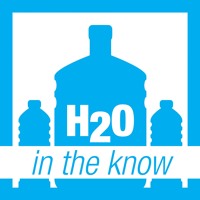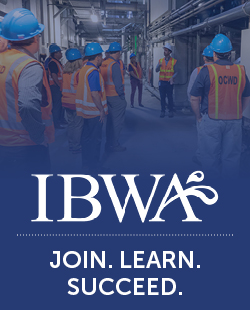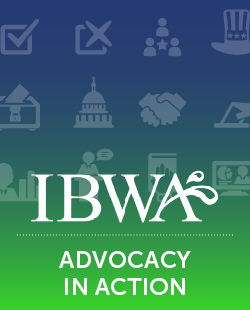Bottled Water Myths
Bottled Water Myths
MYTH: Most bottled water is just tap water in a bottle.
FACT It is important to note that purified bottled water is not just tap water in a bottle. Once the municipal source water enters the bottled water plant several processes are employed to ensure that it meets the purified or sterile standard of the U.S. Pharmacopeia 23rd Revision. These treatments can include ozonation, reverse osmosis, distillation, or de-ionization. The finished water product is then placed in a bottle under sanitary conditions and sold to the consumer.
Some anti-bottled water activists imply that people may be unaware that they are consuming bottled water that is from a municipal water source and has been placed in a bottle without being purified. As stated above, this is not the case. If a bottled water product’s source is a public water system and the finished bottled water product does not meet the FDA Standard of Identity for purified or sterile water, the product label must disclose the public water system source.
MYTH: Bottled water bottles are not safe.
FACT Bottled water containers, as with all food packaging materials, must be made from FDA-approved food contact substances.
So, the plastic and glass containers that are used for bottled water products (which are made from the same materials used in other food product containers) have undergone FDA scrutiny prior to being available for use in the market place. The FDA has determined that the containers used by the bottled water industry are safe for use with food and beverage products, including bottled water, and that they do not pose a health risk to consumers.
Sometimes, the claim is made that individual retail-sized bottled water bottles contain Bisphenol A (BPA). This is not true; PET plastic, from which these bottles are made, does not contain BPA.
MYTH: Bottled water companies are draining water supplies.
FACT According to a 2005 study by the Drinking Water Research Foundation (DWRF), annual bottled water production accounts for less than 2/100 of one percent (0.02%) of the total groundwater withdrawn in the United States each year. Additionally, based on information gathered in the DWRF study, in 2001, 87% of the water withdrawn by bottled water companies, on average, was actually bottled for consumption by humans, so the bottling process is a very efficient one.
At 55 billion gallons per day, the largest user of groundwater is the agriculture industry. That amount equals 68 percent of total groundwater extracted in 2010. The second largest user of groundwater is public drinking supplies, which takes 16 billion gallons per day, or 19 percent of all U.S. groundwater extraction. Compared to those figures, bottled water barely registers on the radar.
MYTH: Bottled water isn’t as regulated as tap water.
FACT By federal law, the FDA regulations governing the safety and quality of bottled water must be as stringent as the EPA regulations which govern tap water. To suggest in any way that bottled water is less stringently regulated than tap water is simply not true.
Bottled water companies produce a safe, healthy, and convenient packaged food product that is comprehensively and stringently regulated by the FDA under the Federal Food, Drug, and Cosmetic Act (FFDCA), 21 U.S.C. §§ 301 et seq., and applicable sections of Title 21 of the Code of Federal Regulations (CFR).
Bottled water must meet the FDA’s general food regulations, as well as standards of identity, standards of quality, good manufacturing practices and labeling requirements specifically promulgated for bottled water. The FDA has issued comprehensive bottled water Standards of Identity, which provide uniform requirements and definitions for the following bottled water classifications: bottled, drinking, artesian, groundwater, distilled, deionized, reverse osmosis, mineral, purified, sparkling, spring, sterile, and well water [21 C.F.R. § 165.110 (a)].
MYTH: There is only one staffer at the FDA who oversees regulation of the entire bottled water industry.
FACT This myth, apart from being completely false, is also illogical. Dr. Henry Kim is in charge of the bottled water program at FDA/Center for Food Safety and Applied Nutrician (CFSAN), located in College Park, Maryland. He shares regulatory tasks with Lauren Posnick-Robin and Paul South at CFSAN.
From the CFSAN website: “The Center for Food Safety and Applied Nutrition, known as CFSAN, is one of six product-oriented centers, in addition to a nationwide field force, that carry out the mission of the Food and Drug Administration (FDA). FDA is a scientific regulatory agency responsible for the safety of the nation’s domestically produced and imported foods, cosmetics, drugs, biologics, medical devices, and radiological products.
The Center has over 800 employees, who range from secretaries and other support staff to highly specialized professionals–such as chemists, microbiologists, toxicologists, food technologists, pathologists, molecular biologists, pharmacologists, nutritionists, epidemiologists, mathematicians, sanitarians, physicians and veterinarians.”
While these individuals and their staffs oversee regulatory enactment and enforcement of the bottled water industry, the key work is done by both FDA regional offices in the United States and the states themselves. Inspections and enforcement all happen in these locations, not in College Park. All 50 states have delegation agreements with FDA, meaning that when they inspect a bottled water plant (or ANY food processing facility), they act with the full authority of the FDA.
MYTH: The FDA has no authority over bottled water made and sold within a single state
(i.e., not in interstate commerce).
FACT FDA’s jurisdiction over bottled water products (and any other product regulated by FDA) extends not only to those products that move in interstate commerce but also to those products sold within a single state that are enclosed in packaging materials that have moved in interstate commerce.
Known as the component theory of FDA jurisdiction, courts have long held that if any component of a food product moves in interstate commerce, FDA has jurisdiction over the finished product, regardless of whether the finished product itself moves in interstate commerce [e.g., United States v. An Article of Food, 752 F.2d 11 (1st Cir. 1985)].
In the case of bottled water, if the plastic used in the bottles, the plastic used in the caps, the paper and ink used on the labels, any other outer packaging materials, and even the water itself comes from out of state, then FDA has jurisdiction over that product. And in today’s commercial society, that will almost always be the case. Congress has recognized this fact by enacting a law that expressly presumes that all food and beverage products are sold in interstate commerce. (21 U.S.C. § 379 (a)).
MYTH: FDA standards allow ‘contaminants’ in bottled water not allowed in tap water.
FACTThe FDA has also established bottled water Standards of Quality for more than 90 substances [21 C.F.R. § 165.110 (b)]. Most FDA bottled water quality standards are the same as the EPA’s maximum contaminant levels (MCL) for tap water systems. The few differences are usually the result of the substance not being found in bottled water or the substance is regulated under another provision of law such as FDA’s food additives program.
Additionally, Section 410 of FFDCA requires the FDA to review all EPA National Primary Drinking Water Standards (NPDWS) for public water systems to determine their applicability to bottled water. If the FDA determines that the NPDWS is applicable to bottled water, it must establish standards of quality for bottled water that are as stringent and protective of public health as the EPA’s standards for public drinking water. If the FDA fails to act within 180 days of the effective date of any new EPA NPDWS for public water systems, the FDA must then apply the new NPDWS to bottled water. This section of the FFDCA is commonly known as the “hammer provision.”
MYTH: Bottled water costs 1,000 times more than tap water.
FACT According to the Beverage Marketing Corporation (BMC), the average wholesale price per gallon of domestic non-sparkling bottled water was $1.18 in 2019. As a popular retail food product, bottled water is available at many differing price points. Also, according to BMC, consumers most often tend to buy bottled water in bulk from supermarkets or large discount retailers.
Bottled water critics tend to cite prices from the most expensive retail outlets they can find – which, according to BMC’s research are often the least utilized by the average consumer – and use them as the basis for such dramatic claims.
MYTH: It takes 17 million barrels of oil a year to make bottled water bottles.
FACT This is an interesting non-verifiable statement typically attributed to researchers at the University of Louisville. Except, according to the school, they have never even heard about it. Our source is University’s Director of Media Relations Mark Hebert, who had this to say:
“We don’t have anyone who ever wrote about ‘17 million barrels of oil used to make PET water bottles.’ We have no idea where the ‘University of Louisville researchers’ has come from. We’ve asked all our environmental guys, our researchers in the engineering school and nobody has touched that one. The only thing, the closest that we can come, is there was a student last who was trying to get folks on campus to quit using bottled water, but she didn’t have anything like that in her literature that even came close to that statement. So we don’t have clue where it came from, and if you find out, please let us know.”
MYTH: The Bottled Water Industry takes water from people in other parts of the world who need it.
FACTThe issue of tying the availability of bottled water to the access of safe drinking water in other parts of the world has become a communications tool for some anti-bottled water groups seeking to completely eliminate bottled water in any form as a consumer choice. And, while the issue of providing access to safe drinking water to all people is of vital importance, the argument presented is a false one.
About 98.5% of all bottled water sold in the United States is sourced domestically. The existence of a bottled water industry in the United States has no impact on the availability of drinking water in, or the public service infrastructure of, any other country.





